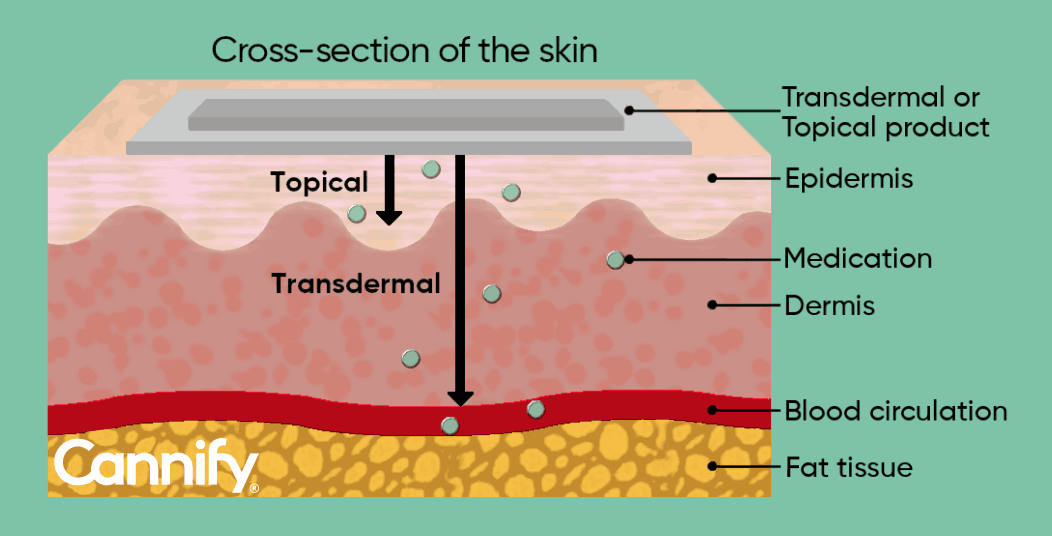What is the difference between topical and transdermal?
Topical and transdermal products are typically applied to the skin. One of the main functions of the skin is to keep out the foreign matter, from water and oils to harsh chemicals, such as ethanol. Therefore, compounds will generally not (as easily) be absorbed through the skin, unless they have been formulated with specific excipients that help skin penetration.
Topical medicines work on the surface of the skin and the medication does not reach the bloodstream. This means that a topical product acts locally. On the other hand,
transdermal medication penetrates the skin and enters the blood, thereby allowing the effects on the whole body through distribution of medicine via the bloodstream.
An example of a topical medicine is hydrocortisone ointment used to treat skin rashes. The ointment containing the medicine is spread over the rash and works locally. Conversely, the transdermal nitroglycerin patch used to treat heart or chest pain is placed on the skin to relieve the pain. In this example, the medicine is applied to the skin, but passes through and enters the blood where it migrates to the heart and the rest of the body.
It is interesting to note that both topical and transdermal formulations can come in many forms. Topical medications can be creams, ointments, liquids, lotions, gels, sprays, foams, powders, and patches. Transdermal medications can come in gels, paste, and patches. It must be noted that for cannabis, there is no scientific literature describing that topical and transdermal products are effective in humans. For example, it is unknown whether the most common cannabinoids in transdermal products actually enter the bloodstream. If the description of a transdermal
THC product states that the product does not make you high, you should question whether this is a transdermal product – if THC reaches the bloodstream in sufficient doses, it is expected to result in a high or stoned feeling.
 Figure 1: Representation of the skin cross-section showing the different levels of medicine penetration. Transdermal products penetrate epidermis and dermis and enter the blood circulation, while topical products generally do not reach layers below the epidermis.
Figure 1: Representation of the skin cross-section showing the different levels of medicine penetration. Transdermal products penetrate epidermis and dermis and enter the blood circulation, while topical products generally do not reach layers below the epidermis.
Watch
the short video on this topic made in collaboration with
Enlighten.
 Figure 1: Representation of the skin cross-section showing the different levels of medicine penetration. Transdermal products penetrate epidermis and dermis and enter the blood circulation, while topical products generally do not reach layers below the epidermis.
Watch the short video on this topic made in collaboration with Enlighten.
Figure 1: Representation of the skin cross-section showing the different levels of medicine penetration. Transdermal products penetrate epidermis and dermis and enter the blood circulation, while topical products generally do not reach layers below the epidermis.
Watch the short video on this topic made in collaboration with Enlighten._logo.svg)